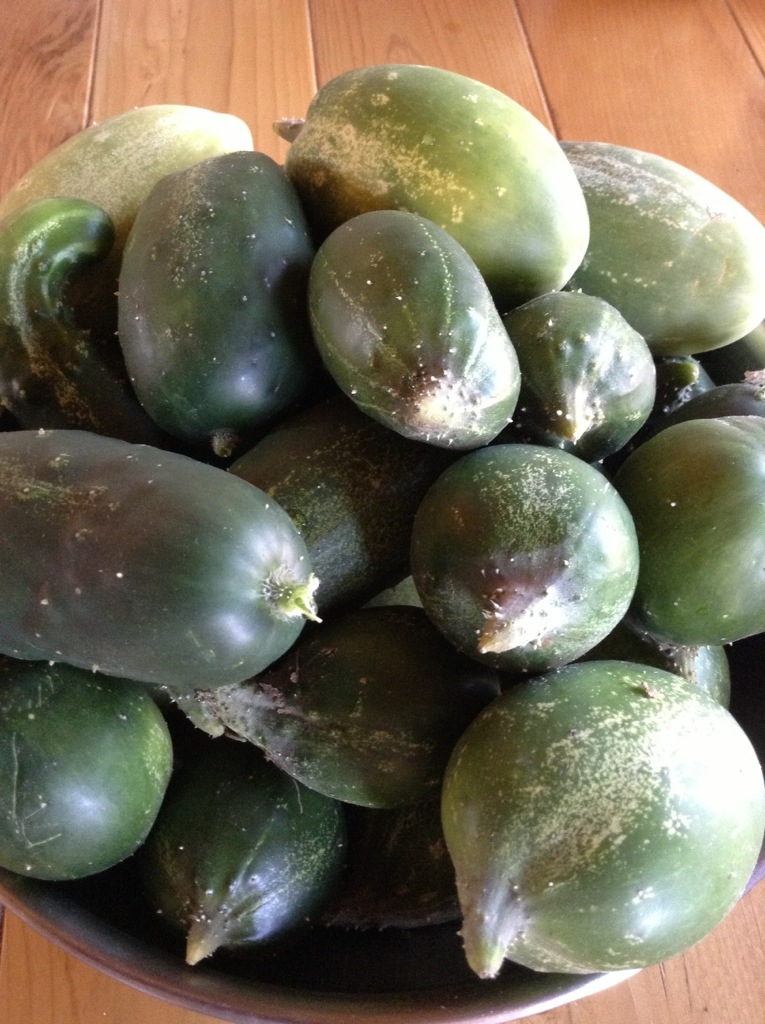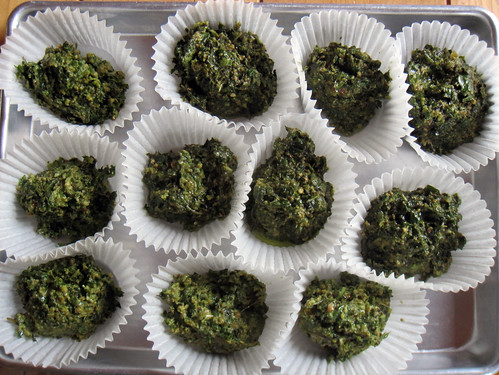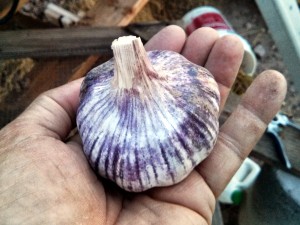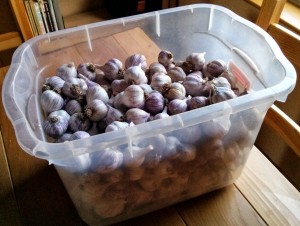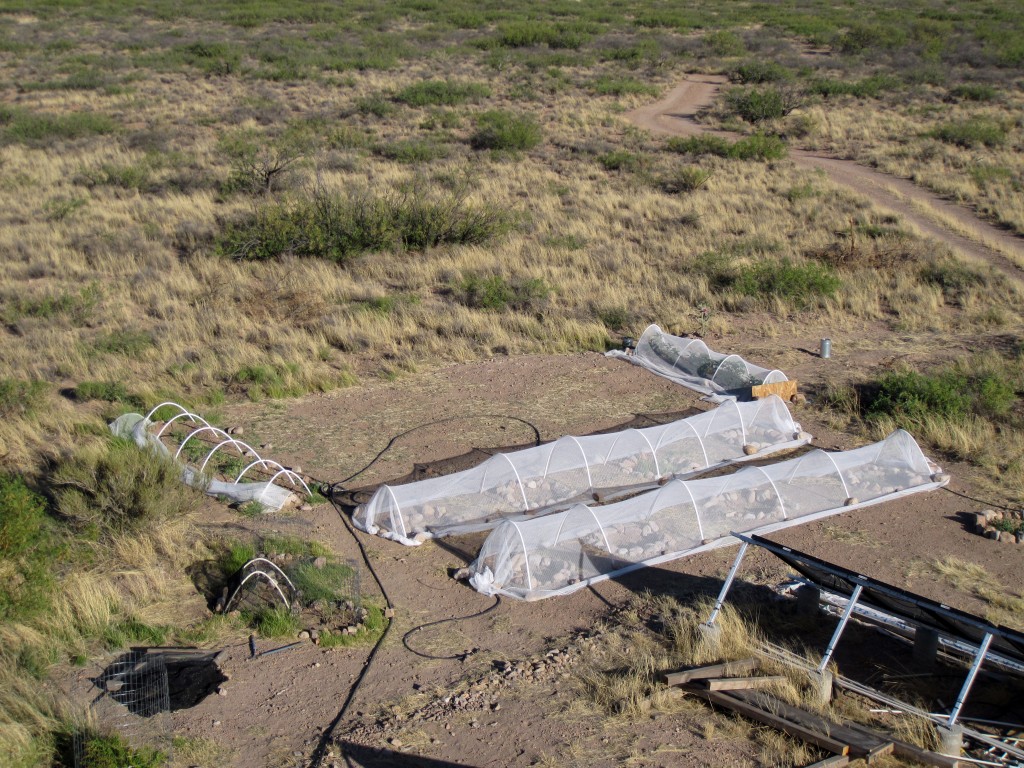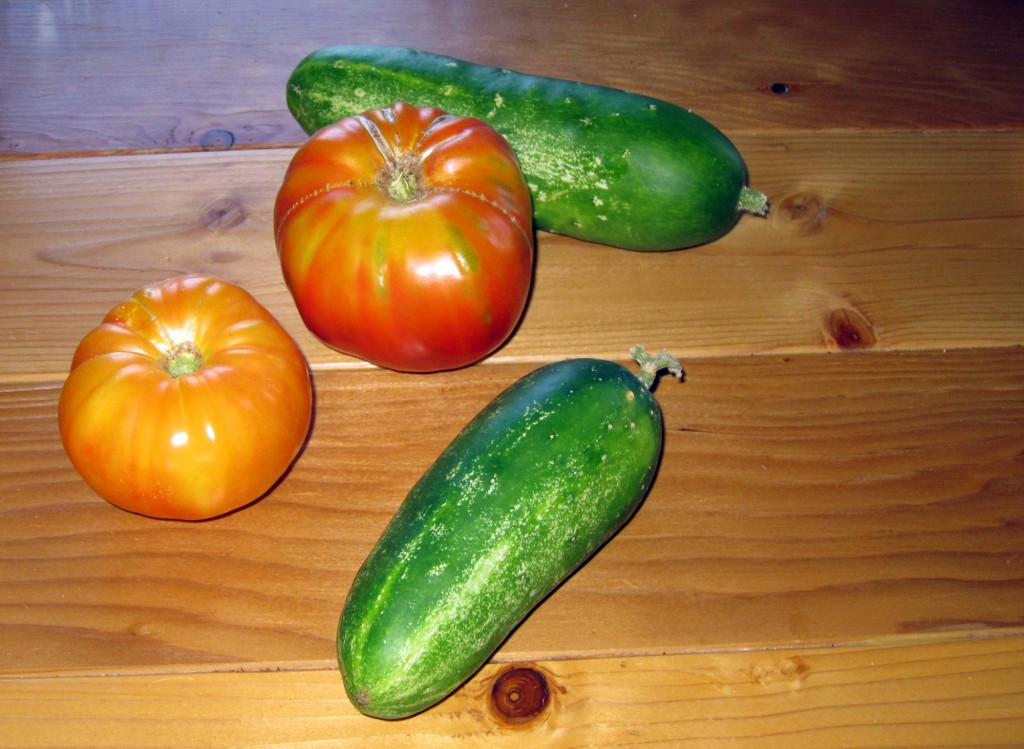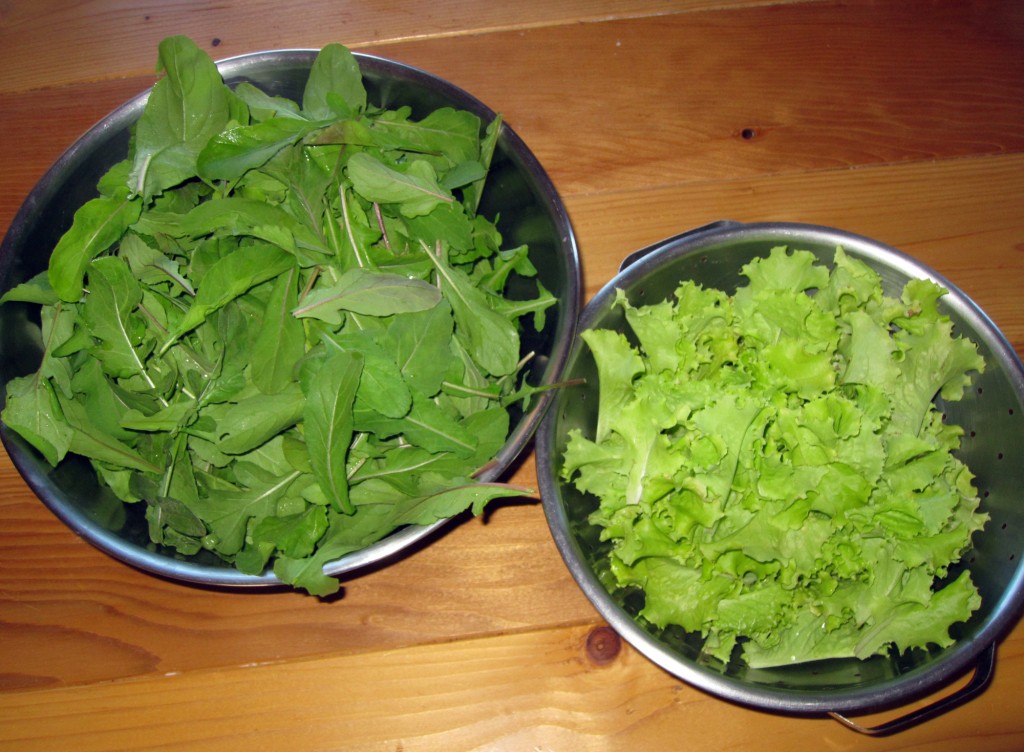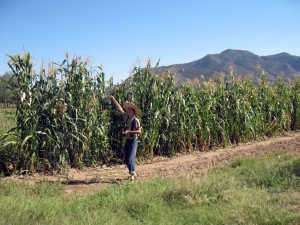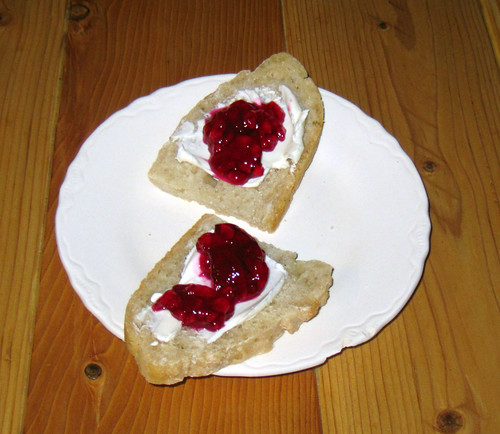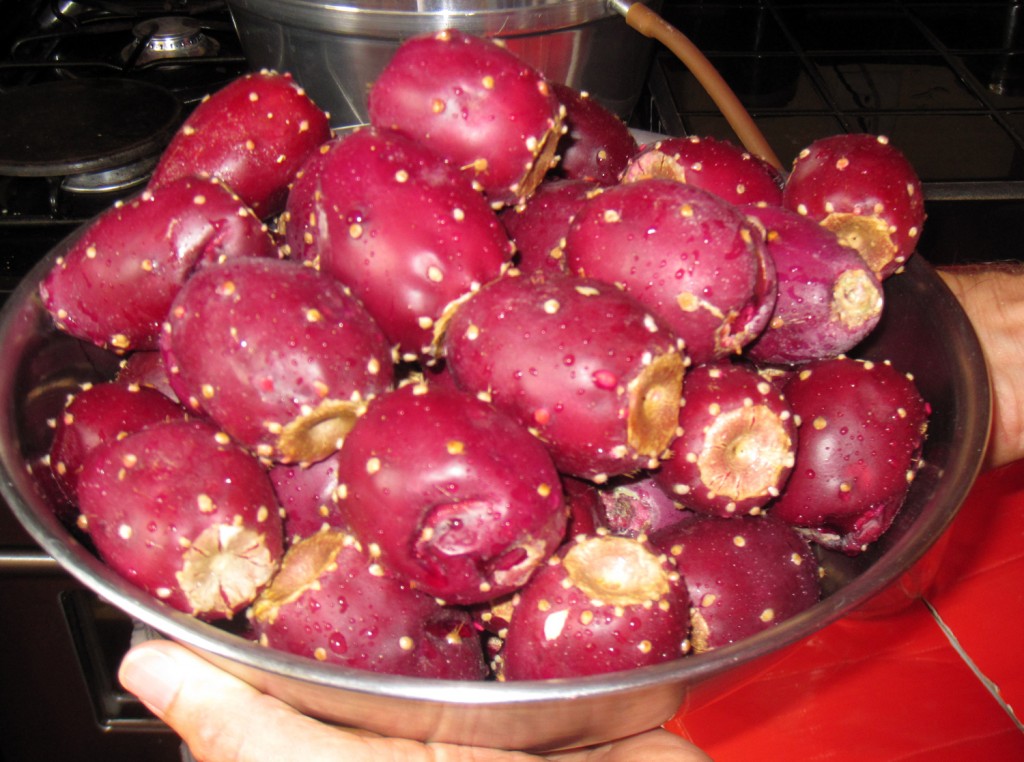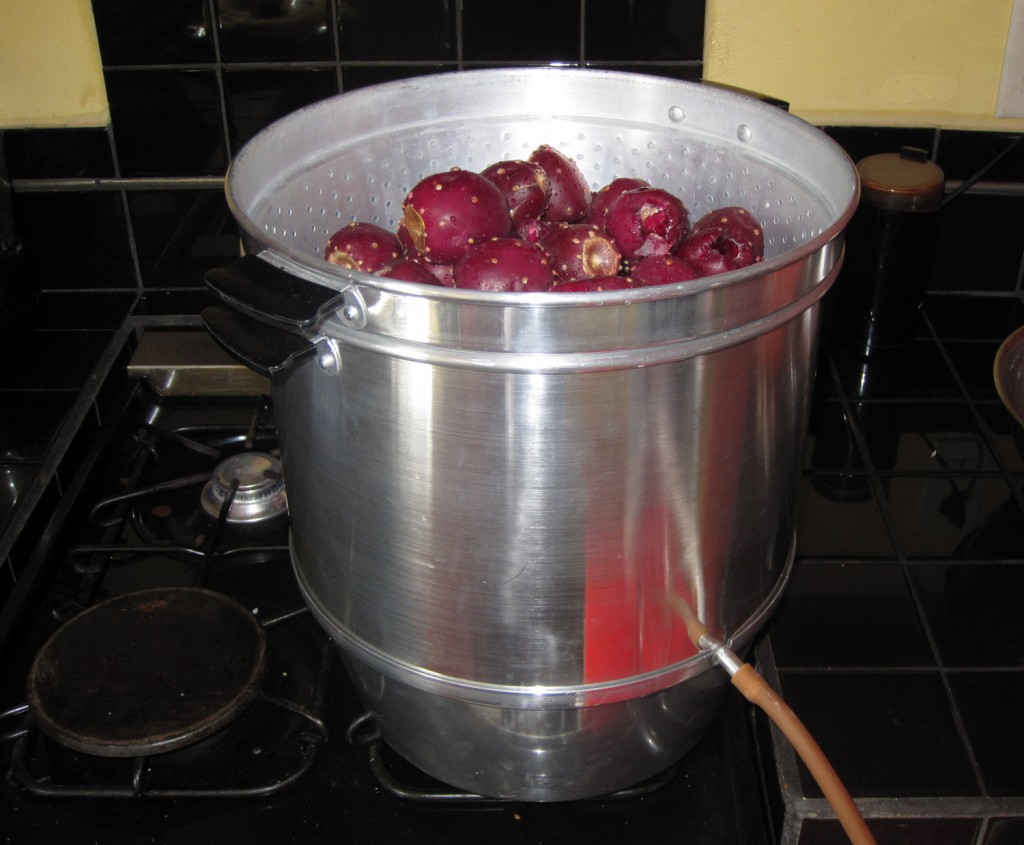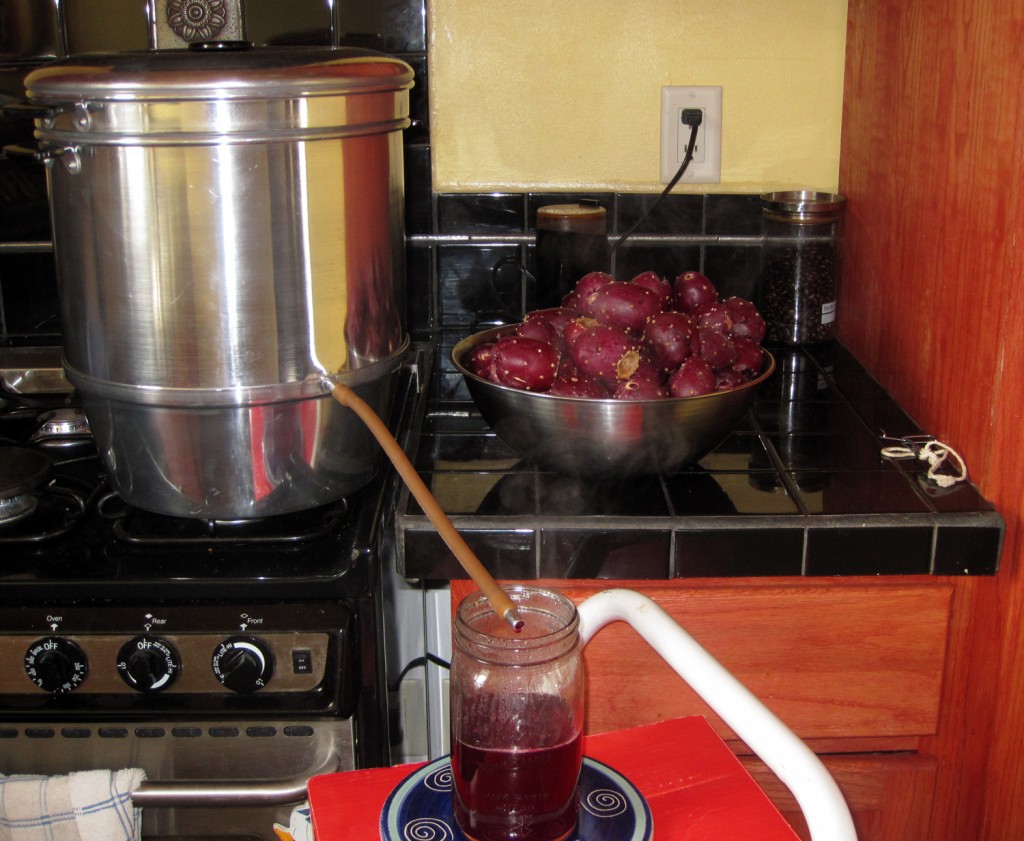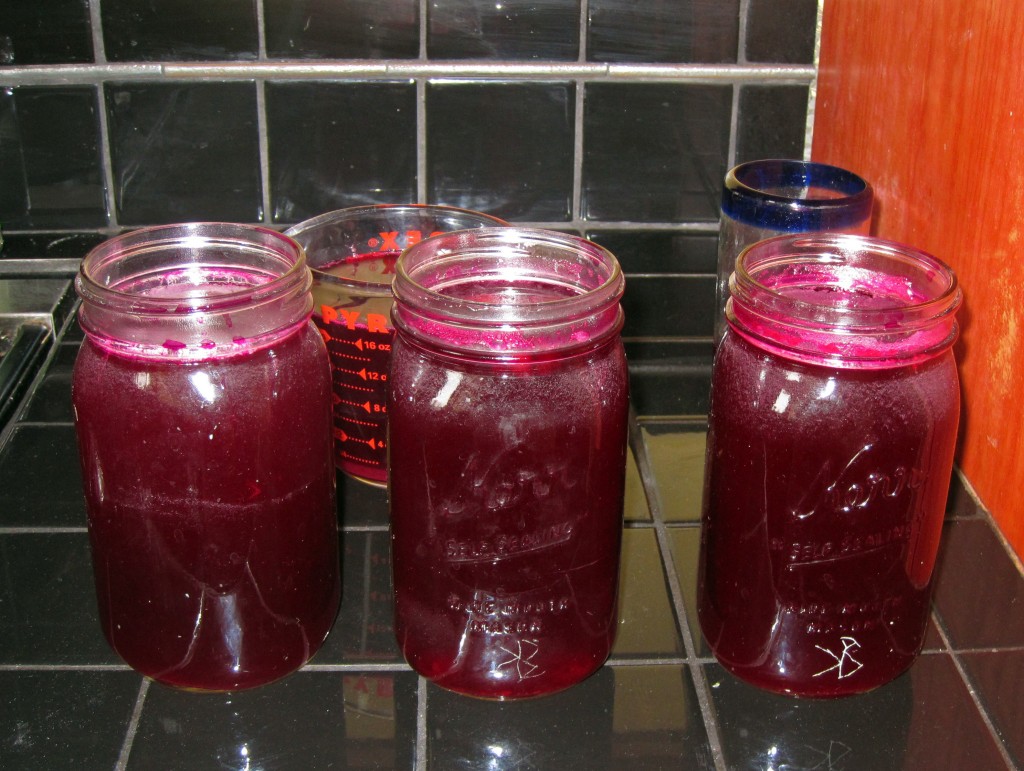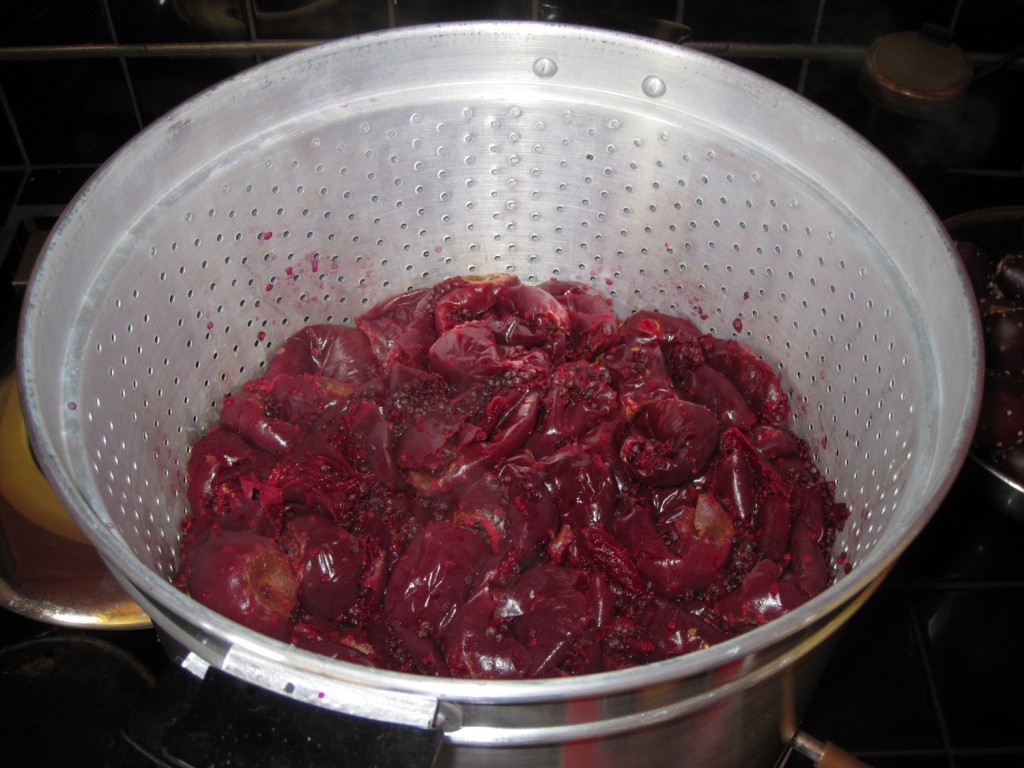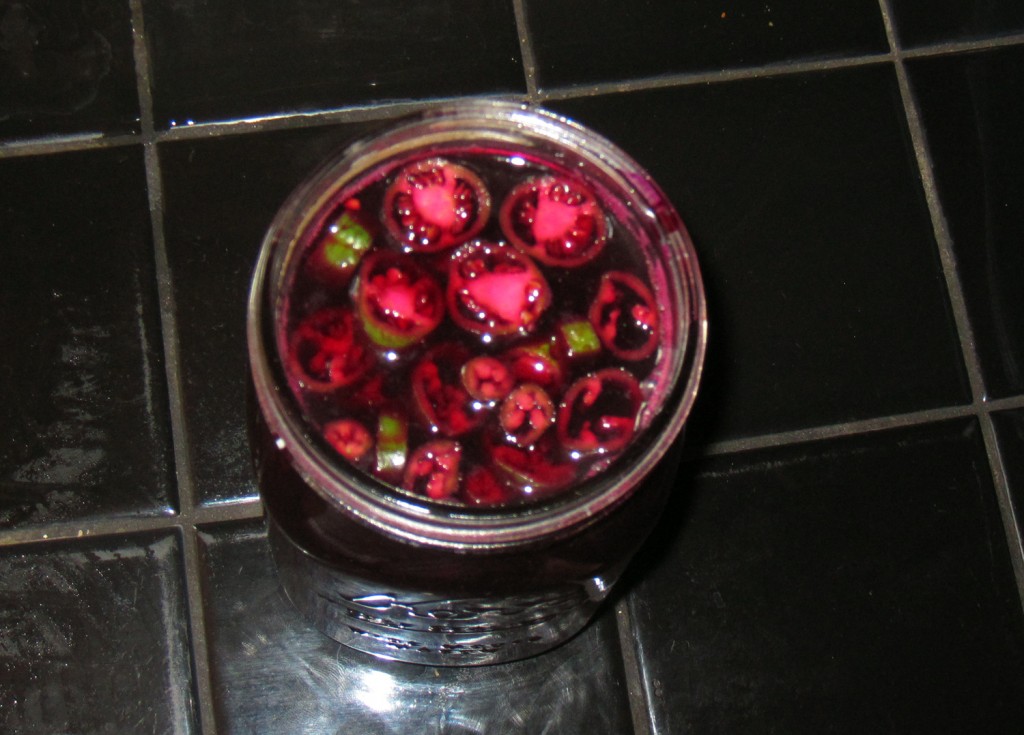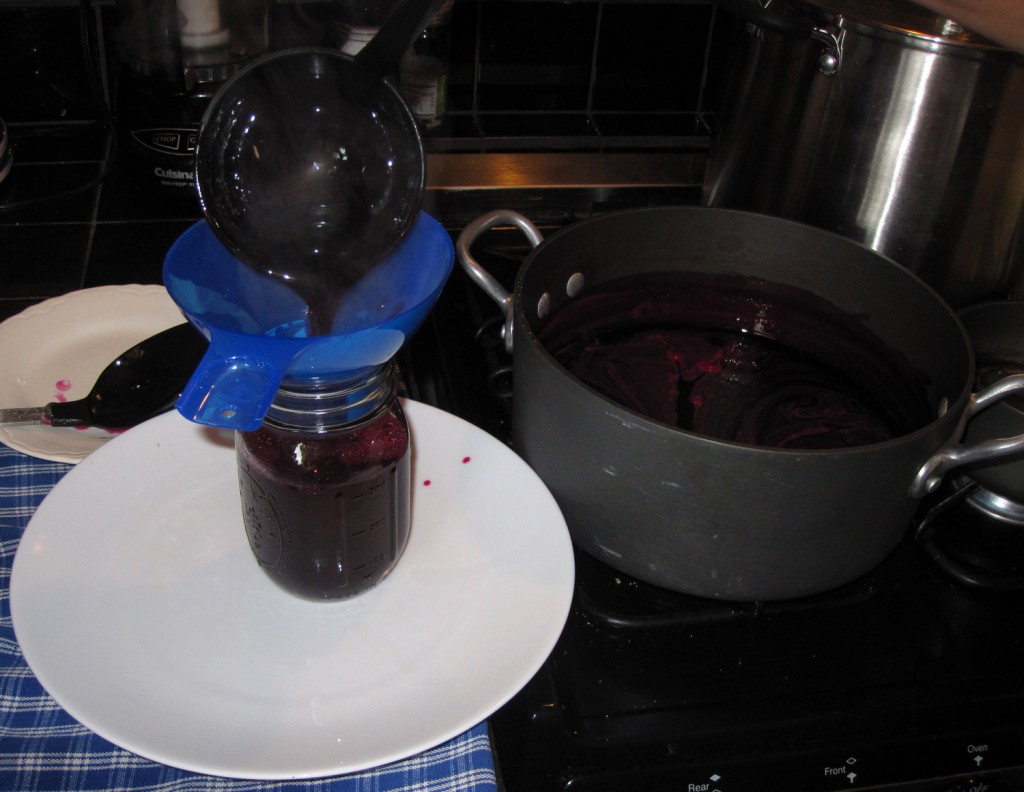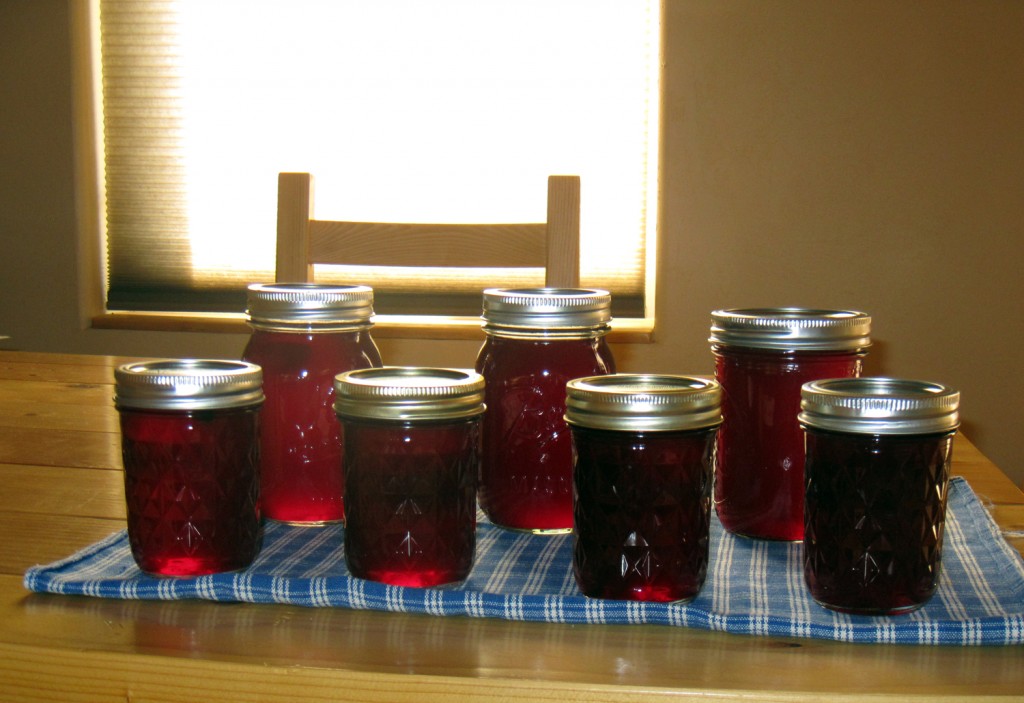food
...now browsing by tag
Coming soon — pickles
Thursday, October 17th, 2013Bounty of basil
Wednesday, August 28th, 2013I grew a lot of basil this year. Really a lot.
I love pesto and like to freeze it for when there is no more fresh basil. Today, I’m trying a new way to freeze it to conserve freezer space. (You might want to wait and see how it works out before trying this yourself. I’ll report back.)
In other news, the annual plague of grotesque grasshoppers has arrived, the monsoons are continuing, and we have finally finished reading Anna Karenina aloud. (Thank god…this is a seriously long, repetitive, and bleak book.)
Allium update 2013
Sunday, June 23rd, 2013Our garlic were harvested a month or so ago. Today I harvested the red shallots and tomorrow the grey shallots. It’s been a great year for all.
After a year of smaller than I hoped for garlic, I put a lot of effort and guess work into a crop of bigger garlic. I am pleased to report that this year’s crop was the biggest yet in total and individual garlic sizes. I embarrassed to say that this was entirely due to luck.
One of the two beds of garlic produced bulbs 3 to 4 times larger than the other bed. The only difference in the way the two beds were handled is that one got sprinkled every night starting in early May. Karen and I took a vacation and part of our preparation was to water the lettuce on a timer. The only way to do this was to put a sprinkler between the bed of lettuce and a bed of garlic. (In fact, I worried this might hurt the garlic crop.) It was so convenient that we left it on after our return. I guess garlic like a lot of water in the spring. There were shallots in that bed also and they too are larger than usual.
Our Purple Maiskij garlic crop came in at 16 pounds this year — double last year. We grew a couple of new kinds of garlic this year which may account for an additional couple of pounds.
The red shallots will need to dry before weighing. But it’s a lovely crop which we hope will last til winter. The grey shallots look good too, but are a lot of work to peel. :)
I am very pleased with this years crop and am already looking forward to next year.
Garden
Monday, May 27th, 2013UPDATE – Here’s another view of things.
We took these pictures to show how many garden beds we have in now.
This is a panorama of the main garden on the west side of the house (greenhouse at the far left).
And this is squashville (though this year it’s asparagus, edamame, artichokes, corn, and jerusalem artichokes), back by the solar panels. We’re putting in 4 more beds in the blank space.
Things are coming along nicely. Fewer trips to the grocery store for us. And better food too.
A delicacy
Sunday, May 12th, 2013There are some treats that are nearly impossible to enjoy if you don’t have access to local produce. One of them is scapes.

Scapes are the immature flower stem of garlic. They come out in late spring and are generally cut off before they bloom to allow the garlic to develop more fully. They have a lovely curl to them.
They are also delicious. They have a much more mellow taste than garlic and are something like a cross between asparagus, small green beans, and a chive. You can saute or steam them and eat them as a vegetable or mixed into an omelet or pasta. You can also make them into a pesto. Here is a pasta dish we made with cut up scapes and scape pesto. Delicious.

scape pasta with scape pesto
The tragedy of scapes is that they are hard to get unless you know someone who grows garlic (and they only appear for a brief period once a year). You might see them at a farmers’ market, but we’ve never seen them at a store.
Brad and I imagine that there are fields and fields of garlic somewhere with scapes not being enjoyed. Some day, maybe we’ll seek them out and spread the love.
Garden update
Monday, October 22nd, 2012Yes, we’re still going strong. The heirloom tomatoes are at their peak, and we’re hoping the frost holds off for another month. (They’re too big to cover.)
And we harvested the first of the fall greens this morning. Hopefully, we’ll have these all winter long.
And I came home from my trip last week to find that Brad had made me 6 new beds for spring! Woo hoo. We are seeming more and more like farmers.
This week, we are getting ready for the big Harvest Festival at the Douglas Mercado Farmers Market next week. This will be the close of the season for this year. We’ll have a seed exchange, pumpkin decorating for the kids, live music, and more. Should be fun!
Border food summit
Friday, September 21st, 2012This week, Brad and I had the opportunity to attend the 2012 Border Food Summit, a conference to explore sustainable agriculture in the southwest. The audience was a combination of growers, farmers market managers, policymakers, and community organizers.
We got there Sunday morning for an all-day, pre-conference tour of some local sustainable farms. We visited many interesting places, but the highlight for us was a trip to the farm from Native Seeds/SEARCH. This non-profit organization is involved in the important work of “conserving, distributing and documenting the adapted and diverse varieties of agricultural seeds” of the southwest. (For those of you not up on this, industrial agricultural practices have dramatically reduced the number of species of plants cultivated, resulting in a reduction in biodiversity that causes all kinds of other problems. Seed saving and growing diverse native crops combats this, and Native Seeds/SEARCH are pioneers in this area.)
The young people who work on this farm are amazing, and we learned all kinds of things about not only seed saving, but growing in general. More about this later.
- Evan at the Native Seeds/SEARCH farm
All day Monday and Tuesday through noon, we attended a variety of sessions on topics that included food systems, growing, cooperatives, small farming concerns, community organizing, and social justice. It was very interesting and thought provoking. Here’s a short clip from Dr. Ricardo Salvador, who keynoted the conference.
The sessions at this conference had a lot of relevance for us, in terms of our own growing and food production and consumption, our work with the farmers market, and our larger interest and concerns with the global food system. At the end of the conference, we were asked to reflect on how we’d take what we learned and apply it personally and as a part of a community. Here’s what Brad and I are committed to doing.
What we can do as individuals:
- Put some small gabions on our land in the washes to create some new micro-climates and possibly make a place for a permaculture food forest in the future (This had come up at Heritage Days last year too.)
- Plant more mixed beds with crops growing among cover crops (We got some amazing tips on this at Native Seeds.)
- Save more seeds and start a local seed library here in Portal. (More to come on that.)
What we can do together:
- Emphasize the benefits of buying local, natural food at the Harvest Festival at the farmers market in Oct. This event will also include a seed exchange and seed saving education for kids.
- Begin some small local community networks here to advance these issues
After the conference, we returned to the Native Seeds farm. They had had a bunch of pumpkins available for a donation, and we decided to get a whole bunch of them to use in our Harvest Festival pumpkin decorating contest next month — supporting two good causes at once. We also got a giant bag of rye/vetch seed, a few other goodies, and some advice and encouragement. What nice people!
Happy cows
Saturday, September 15th, 2012I’ve written here before about the horrors of industrial agricultural production. Well, here’s a happy article for a change.
I read this whole article wondering what brand this milk was sold under. I was so happy to hear it was Organic Valley.
Almost two years ago, when we were researching food production, we decided to start buying Organic Valley milk and cream. It costs more, but we heard that their farmers really treated their animals well. Also, they make boxes of shelf stable milk that work well for us out here.
I believe that what we buy and what we eat really matters in the bigger world.
2nd try
Wednesday, August 22nd, 2012The most beautiful color
Thursday, August 16th, 2012With a few rounds of canning under our belts, we thought we’d try something new and make prickly pear jelly. (Great thanks to my friend Brenda, who not only introduced us to this delicious jelly, but taught us this amazing juicing technique.)
We were up in Portal this week and saw that the prickly pears were perfectly ripe for picking. (There is a short window for this. Not long after they are ripe, the birds and bugs devour them. Having our own small prickly pear in the yard helped us gauge this this year.)
We picked about a half 5-gallon bucket of the fruit, which are called tunas. (For future reference, 2-1/2 gallons of tunas made about 3-1/2 quarts of juice.)
After rinsing the tunas, the next step is to load them into steam juicer. Note that I didn’t say anything about removing the stickers or seeds. That’s the beauty of a steam juicer. It has three parts. A pan of water at the bottom. A giant pot and a steamer basket that sits inside of that. The steam forces the juice out of the fruit (and into a little rubber tube that goes into your collecting vessel), leaving all the yucky part behind in the basket.
Cover and boil for awhile and then out comes the juice!
This is what’s left when you’re done. Great for composting.
The next part of the process is the whole canning thing. Boil the jars, fill, seal and boil again, etc. (How did people do this before the Internet? :)
The jelly is made with the juice, pectin, and sugar. For one batch, I also stewed some jalapenos in the juice. We’ll have to see how that comes out. (If you haven’t had jalapeno jelly with cream cheese, it is fabulous!)
Finally, into the jars.
Here’s the final product.

